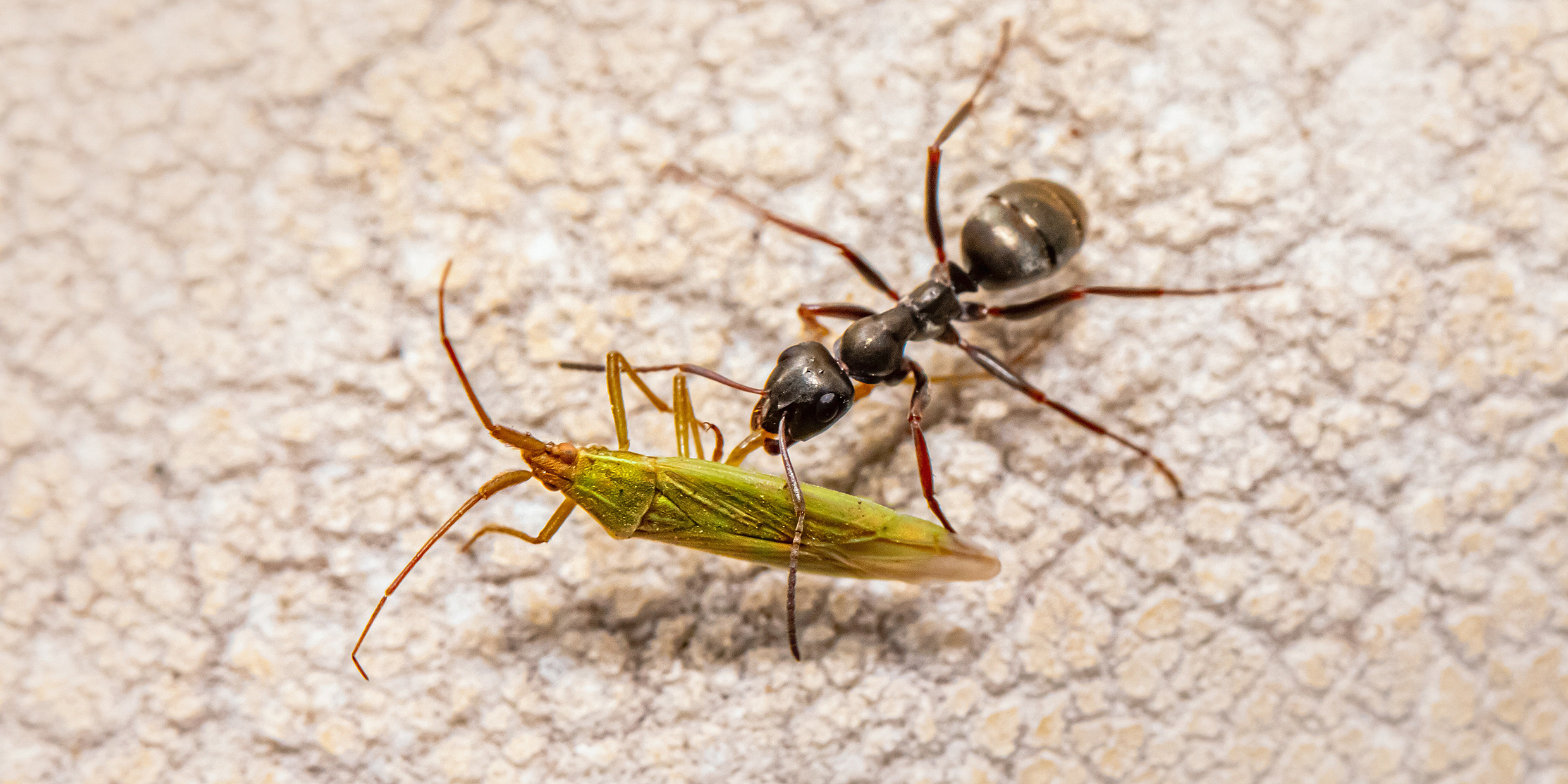Originally published 10 September 2006
Foraging Saharan desert ants roam hither and yon from the nest looking for food. When they find a source, they head straight back to the nest along a beeline, in an environment devoid of landmarks. They know exactly how far from the nest they have traveled. How do they do it?
Do they somehow keep track of energy expenditure? Do they integrate the flow of visual stimuli across their eyes? Neither hypothesis works for desert ants, who can exactly estimate distance irrespective of the load they carry and in complete darkness.
Matthias Wittlinger, Rüdiger Wehner, and Harald Wolf of the University of Ulm have shown that for one thing the ants count their steps: a pedometer, if you will. (Science, June 30, 2006)
Here’s how they proved it.
Ants were trained to walk from their nest to a feeder over a distance of 10 meters along a metal channel, then allowed to return along a much longer channel. When they had returned the correct distance, they started walking back and forth in the channel looking for the entrance to the nest. They knew how far to go.
Now when the ants reached the food source the experimenters made some adjustments. For some of the ants, they glued extenders (“stilts”) on their legs. For other ants, they snipped off about half of the legs (“stumps”). On the return journey the long-legged ants traveled too far before looking for the nest. The short-legged ants didn’t go far enough, in exact proportion to the length of their stride.
They were counting steps!
Clearly the ants aren’t counting “One, two, three…” But count they do, by some yet unknown biochemical method. A built-in pedometer.
Now this, I suggest, is quite a marvelous thing, another demonstration of the rich inventiveness of life, another of those living miracles that make the jaw drop with delight. Wow!
But…
…but, what about those snipped legs, or the glued-on stilts, for that matter?
Does exposing another of the mysteries of life justify mutilation of a few ants?
Tens of millions of animals are killed each year for scientific research — mostly rats, mice, and guinea pigs, but also large numbers of cats, dogs, and monkeys. To put these figures into perspective, Americans kill several billion animals each year to fill their stomachs. And God knows how many zillions of ants are killed each year worldwide simply because they are a nuisance or get in the way of bulldozers.
Perhaps no science-related issue evokes more passionate debate than animal rights. Scientists vehemently defend the use of animals as an prerequisite to progress in human healing. Better rats die, they say, than humans. Animals rights activists just as vehemently deplore the use and misuse of animals in research. Much research is unnecessary and cruel, they say, and much of the rest could be done with tissue cultures, epidemiological studies, or computer simulations.
The debate has not been without consequences: Rules for the care and use of experimental animals have been strengthened by scientists, and the number of animals used in research has decreased — developments most people will certainly approve.
How do I feel about the ants with the manipulated legs?
Often when I was on a nature walk with students I used my penknife to open a gall — one of those woody growths on plants that are caused by insects. At the center of each gall is a tiny larva. Left alone, the larva would have metamorphosed into an adult insect and escaped its place of winter repose into the world.
I have opened galls on goldenrods, blueberries, oaks, cherries, and willows to expose the larvae of wasps, gnats, and midges. A gall is one of life’s more ingenious stratagems. An insect lays an egg in the leaf or stem of a plant, and by physical irritation, chemical secretion, or both, causes the plant to grow a kind of tumorous deformity about the egg. The gall provides food and protection for the larva.
I would nudge the larva from its nest with the tip of the penknife. We would examine it with a magnifier and marvel at this marvelous example of nature’s resourcefulness. Then, lesson finished, I would drop the larva to the ground — to die.
As the years passed, I felt a twinge of regret bubble up from somewhere deep inside. I am not a sentimental person. I swat flies and trap mice. I eat the flesh of mammals (not so often as I used to), birds, and fish. And I know that insect life is based on an excess of fecundity; a vast and indiscriminate mortality is part of the plan.
And yet, and yet…
In opening galls, I had sacrificed a life in the cause of education, so that my students might better know the more-than-human world, a worthy goal. But as I got older, I opened galls with increasing reluctance. The turn-of-the-century naturalist John Burroughs wrote, “To know is not all, it is only half. To love is the other half.” My balance of knowledge and love has shifted more insistently towards love.
Make no mistake; I support the measured use of animals in medical research. On this issue, as for many ethical controversies, my touchstone is minimizing the sum total of the suffering of sentient beings, recognizing the special role of consciousness — no easy calculus by any means. I would hope that all laboratories that use animals in research are guided by ethical committees that include outside, non-scientist specialists, including animal-rights advocates.
And the step-counting desert ants? When I think of the thousands of ants I have killed for no other crime than invading the sugar bowl or pantry, I won’t begrudge Wittinger and colleagues for snipping a few legs. But I wouldn’t want to do it myself, even for so extraordinary a discovery as the ant pedometer.



